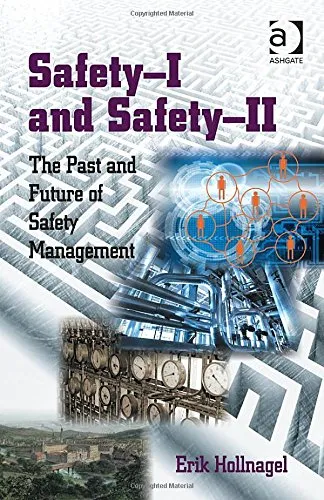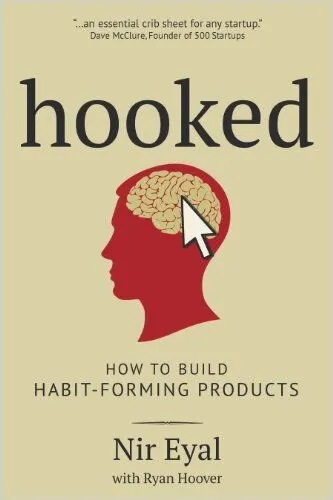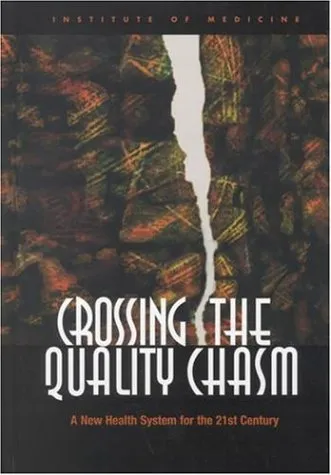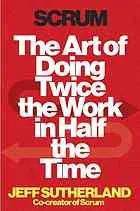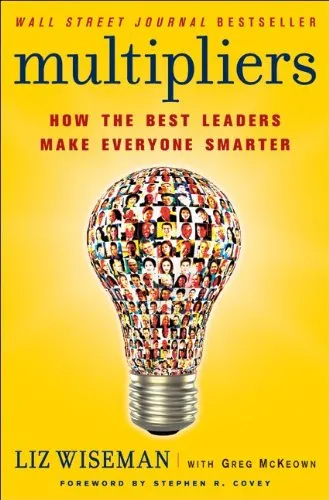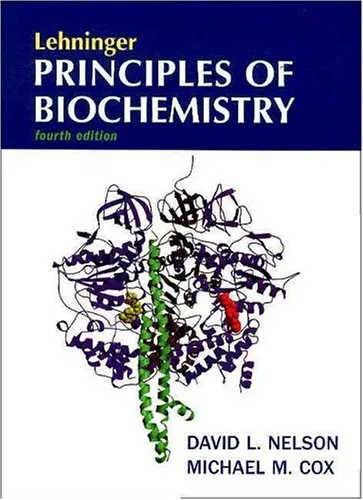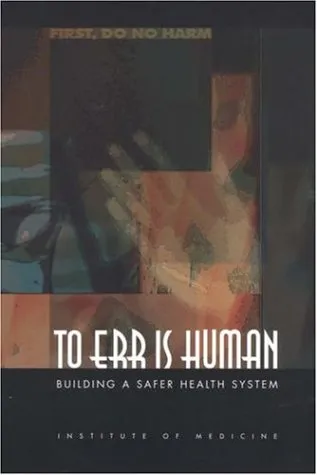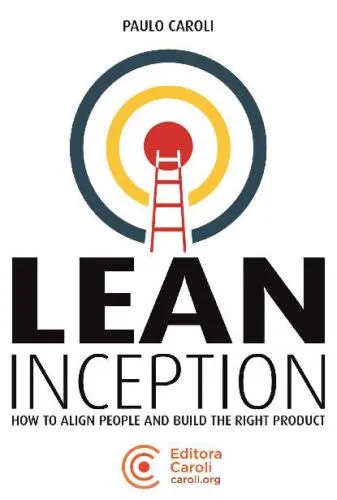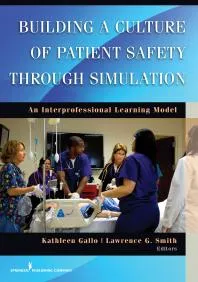Safety-I and Safety-II: The Past and Future of Safety Management
4.5
بر اساس نظر کاربران

شما میتونید سوالاتتون در باره کتاب رو از هوش مصنوعیش بعد از ورود بپرسید
هر دانلود یا پرسش از هوش مصنوعی 2 امتیاز لازم دارد، برای بدست آوردن امتیاز رایگان، به صفحه ی راهنمای امتیازات سر بزنید و یک سری کار ارزشمند انجام بدینکتاب های مرتبط:
معرفی کتاب 'Safety-I and Safety-II: The Past and Future of Safety Management'
کتاب 'Safety-I and Safety-II: The Past and Future of Safety Management' نوشته اریک هولناگل، به بررسی رویکردهای مختلف مدیریت ایمنی میپردازد و نقش آنها در توسعه ایمنی در سازمانها و صنایع مختلف را بررسی میکند. این کتاب با رویکردی جامع و نوآورانه تلاش میکند تا طرحی جدید برای مدیریت ایمنی ارائه دهد که نهتنها بر کاهش حوادث تمرکز دارد بلکه به درک و بهبود مستمر فرآیندها نیز توجه میکند.
خلاصهای از کتاب
«Safety-I» به عنوان مدل سنتی ایمنی، بر چارچوبها و استراتژیهایی تمرکز دارد که هدف آنها جلوگیری از وقایع ناگوار و کاهش خسارتها است. این مدل به شناخت و تحلیل حوادث و یافتن علتهای آن میپردازد تا بتوان با تغییرات محدود از وقوع آنها جلوگیری کرد.
با این حال، هولناگل در این کتاب پیشنهاد میدهد که تمرکز صرف بر Safety-I کافی نیست و لازم است تا رویکرد Safety-II نیز پذیرفته شود. این مدل به مجموعهای از فرآیندها و فعالیتها نظر دارد که عملکرد صحیح سیستم را تضمین میکنند و به دنبال تطابق و انعطافپذیری در رویارویی با شرایط مختلف هستند.
نکات کلیدی
- تفاوتهای بنیادی بین Safety-I و Safety-II را درک کنید.
- اهمیت انعطافپذیری و تطبیقپذیری در سازمانها و سیستمها.
- رویکرد جامعتر در تحلیل و مدیریت ایمنی.
- تمرکز بر یادگیری از موفقیتها نهتنها از شکستها و حوادث.
نقلقولهای معروف از کتاب
«برای پیشرفت در ایمنی نباید تنها به جلوگیری از حوادث نگاه کنیم، بلکه باید به درک صحیح از عملکرد عادی و روزمره سیستمها برسیم.»
«ایمنی به همان اندازه که به عدم وقوع حادثه وابسته است، به توانایی سیستم در انعطافپذیری و تط adapt پذیری نیز وابسته است.»
چرا این کتاب مهم است
این کتاب به دلیل ارائه رویکردی نوین در مدیریت ایمنی اهمیت دارد. با افزایش پیچیدگی سیستمها و عدم قطعیتهای محیطی، پذیرش رویکردی مانند Safety-II کمک میکند تا سازمانها بتوانند نهتنها از حوادث جلوگیری کنند، بلکه به طور مداوم آمادهٔ مواجهه با چالشها و استفاده از فرصتها باشند. اریک هولناگل با تلفیق تحقیقات علمی و تجربیات عملی، بینشهای نوینی در این حوزه ارائه میدهد که میتواند تأثیرات مثبتی بر ایمنی و کارایی سازمانها داشته باشد.
Introduction
Welcome to an extensive exploration of safety management through the lenses of Safety-I and Safety-II. In this comprehensive introduction to the book "Safety-I and Safety-II: The Past and Future of Safety Management" by Erik Hollnagel, we embark on a journey to understand how the concepts of safety have evolved and what the future holds. This book is an essential resource for practitioners, scholars, and anyone interested in the dynamic field of safety management.
Detailed Summary
In "Safety-I and Safety-II: The Past and Future of Safety Management," Erik Hollnagel challenges traditional paradigms of safety and introduces a revolutionary new approach. Safety-I, the traditional safety management approach, focuses on preventing things from going wrong by identifying and eliminating risks. It is reactive by nature and is primarily concerned with investigating accidents and near misses to prevent future occurrences.
Hollnagel proposes a shift towards Safety-II, a proactive and holistic approach that views safety as the ability to succeed under varying conditions. Instead of focusing solely on what goes wrong, Safety-II encourages understanding why things go right. It emphasizes flexibility, adaptability, and resilience within complex systems.
This book delves deep into the mechanics of both approaches, contrasting their methodologies and implications. Through real-world examples and a wealth of research, Hollnagel provides a compelling argument for transitioning to a Safety-II mindset, addressing the limitations of Safety-I while embracing the complexity and variability inherent in modern socio-technical systems.
Key Takeaways
- Safety-I focuses on what goes wrong; Safety-II focuses on what goes right.
- Safety-II advocates for understanding normal work processes to enhance system resilience and adaptability.
- The transition from Safety-I to Safety-II involves a fundamental shift in perspective – from management by compliance to management by competence.
- Embracing variability within human and system performance is crucial to achieving true safety.
- Safety management should incorporate both reactive and proactive strategies to navigate complex environments effectively.
Famous Quotes from the Book
"Safety can be regarded as the ability to succeed under varying conditions."
"Safety management must therefore change from ensuring that 'as few things as possible go wrong' to ensuring that 'as many things as possible go right'."
Why This Book Matters
This book is crucial because it addresses the changing nature of work and safety management in an increasingly complex and interconnected world. As global systems evolve, so too must our approach to safety. Hollnagel's insights challenge conventional wisdom, offering a new way to think about safety that aligns with the realities of modern systems.
By understanding the principles of Safety-I and Safety-II, readers are better equipped to manage risks in a way that is not only reactive but also proactive and forward-thinking. This shift is vital as industries face new challenges and opportunities brought about by technological advancements and ever-changing operating environments. Hollnagel's work is indispensable for anyone involved in creating safer, more resilient systems.
دانلود رایگان مستقیم
شما میتونید سوالاتتون در باره کتاب رو از هوش مصنوعیش بعد از ورود بپرسید
دسترسی به کتابها از طریق پلتفرمهای قانونی و کتابخانههای عمومی نه تنها از حقوق نویسندگان و ناشران حمایت میکند، بلکه به پایداری فرهنگ کتابخوانی نیز کمک میرساند. پیش از دانلود، لحظهای به بررسی این گزینهها فکر کنید.
این کتاب رو در پلتفرم های دیگه ببینید
WorldCat به شما کمک میکنه تا کتاب ها رو در کتابخانه های سراسر دنیا پیدا کنید
امتیازها، نظرات تخصصی و صحبت ها درباره کتاب را در Goodreads ببینید
کتابهای کمیاب یا دست دوم را در AbeBooks پیدا کنید و بخرید
1599
بازدید4.5
امتیاز0
نظر98%
رضایتنظرات:
4.5
بر اساس 0 نظر کاربران
Questions & Answers
Ask questions about this book or help others by answering
No questions yet. Be the first to ask!
